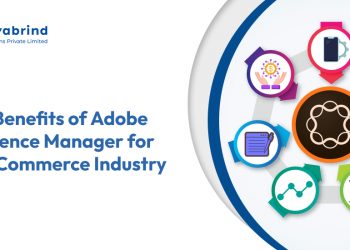The Increasing Popularity of the B2B and B2C E-commerce Marketplace
- September 21, 2022
- Posted by: tony
- Categories: Blog, E-Commerce Development

The future of retail and almost every other industry is e-commerce. New business-to-business (B2B) and business-to-consumer (B2C) marketplaces are springing up every day. With such stiff competition, no enterprise can sit back and wait for customers. Instead, they need to strategize, constantly market, observe their customer’s demands, meet their customers on various channels, plan inventory, ensure prompt delivery, and the list can go on.
But there is a difference between a B2B and B2C marketplace. Knowing the difference ensures that each marketplace is built correctly to cater to its respective audience.
The difference between a B2B and a B2C marketplace is significant.
In a B2B marketplace, more than one person makes the buying decision. The business protocol requires that the enterprise request a quote, compare prices, and negotiate these prices. Because of the long buying cycle, a B2B marketplace needs to engage with the potential customer longer, communicate quickly, and be known for its reliability and quality. Managing its many sellers is a major responsibility for a B2B marketplace. Ensuring they receive their orders on time, dispatch the order quickly, deliver quality, get their payments, and more.
B2C marketplaces, on the other hand, thrive on volume sales, experience a spike in buying during offers and sales, and need to allow their consumers to create wishlists, and buy easily.
Below are some of the main features of B2B and B2C marketplaces. But these are only the top few, and an in-depth list can run into hundreds of features.
Some of the key features needed in a B2B e-commerce marketplace
- Portal customization
- Mobile-first design
- Contract pricing and cataloguing
- Bulk ordering
- Quick reordering
- Access controls
- Shared shopping carts
- Quote management
- Quote management
- Digital payment options
- Product information management (PIM)
- Advanced and sophisticated search
- Order tracking
- Real-time inventory management
- Warehouse and logistics management
- Payment options
- Customer review and rating
- and more
Some of the key features needed in a B2C e-commerce marketplace
- Responsive design
- Mobile-first design
- User-friendly navigation
- Product filter and comparison and sorting
- Search function
- Geolocation
- Optimized cart
- Payment options
- Payment options
- Security
- Wishlist creation
- Loyalty program
- View of best-selling products or new arrivals
- Personalization
- Social media links
- Live chat
- and more
Are you toying with the idea of launching an e-commerce business? Need advice on how to launch a B2B or B2C marketplace? Need a technology partner to help you build your marketplace? Reach out to Navabrind IT Solutions.
We are an e-commerce technology partner with over a decade of experience. We have 100+ software engineers specializing in e-commerce technologies and work with every bleeding-edge e-commerce platform. We have experience across industries and consult, develop, customize, deploy, and maintain solutions for customers across the US, Europe, and Asia.
We have built B2B or B2C marketplaces from scratch and will be happy to start a conversation with you. Request a demo!
Related Articles
-
Best Practices for Implementing and Managing Adobe Experience Manager
Best Practices for Implementing and Managing Adobe Experience Manager July 16, 2024 Posted by: tony Categories: Adobe Experience Manager, Blog No Comments Adobe Experience Manager (AEM) is a powerful content management platform that integrates digital asset management, site management, and content delivery to enhance customer experiences across various channels. Successful AEM implementation involves clear objectiveJuly 16, 2024 Read more -
How Does Adobe Experience Manager (AEM) Integrate with E-Commerce Platforms
How Does Adobe Experience Manager (AEM) Integrate with E-Commerce Platforms July 16, 2024 Posted by: tony Category: Uncategorized No Comments In the dynamic landscape of digital marketing, the power of Adobe Experience Manager (AEM) is amplified through its seamless integration with various systems, transforming it into a powerhouse for personalized, omnichannel customer experiences. This blogJuly 16, 2024 Read more -
Top 8 Benefits of Adobe Experience Manager for the E-Commerce Industry
Top 8 Benefits of Adobe Experience Manager for the E-Commerce Industry July 15, 2024 Posted by: tony Categories: Adobe Experience Manager, Blog No Comments Adobe Experience Manager (AEM) stands out as a premier content management solution, offering a host of benefits that elevate digital experiences. It provides seamless content management with an intuitive interface, enablesJuly 15, 2024 Read more
How can we help you?
Get in touch with a solutions consultant that can share best practices and help solve specific challenges.




